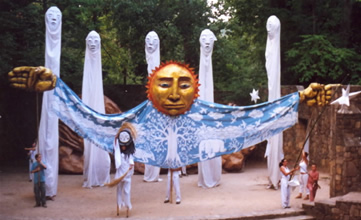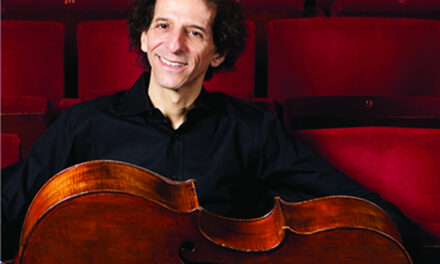Urban Bush Women, the wonderful all-female troupe led by choreographer Jawole Willa Jo Zollar, has been making sizzling, ebullient dances about women’s lives, especially black women’s lives, since 1984. The dances are often topical and are generally imbued with a philosophy of social and political activism, as well as humor – and sometimes rage. For the company’s 20th season, Zollar explores and pays homage to one of her important influences, the path-breaking choreographer Pearl Primus.
Walking with Pearl – Africa Diaries (2004) and Walking with Pearl – The Southern Diaries, which premiered in the first of Urban Bush Women’s two ADF performances in Reynolds Theater on June 14, incorporate text from Primus’ diaries with series of movement sketches. Unfortunately, neither piece is satisfactory as a work of art.
The first problem is that dance is essentially abstract and deals best with realities not well expressed or conveyed in words. Even story ballets are much less about meaning than feeling. For a choreographer to want to harness dance to a heroine’s thoughts is understandable, but in order for the attempt to succeed, it would probably work better for the dance to express the feelings underlying the text, rather than forming a background for the spoken words.
The equally great second problem with these two works is that the writing is not stage-worthy. While Primus’ observations and comments may have represented fresh thinking at the time they were made, many of them have subsequently become clichés. And while Primus made unusually dynamic use of strong verbs in her private writings used by Zollar for the dance works, there were very few powerful images or poetic phrases. In fact, the only memorable phrase (from The Africa Diaries) concerned “the leopard of rage on my back.” Sadly, the dance itself failed to give us that image.
Perhaps the greatest problem with both dance pieces is that they fail to cohere as unified wholes. They have variety, but not unity, in their construction. There is no sense of the absolute necessity of each element. There is no compelling rhythmic force propelling the viewer through a dramatic or emotional course. Instead there’s a clunky, stop-and-go action, the result of the works’ episodic and fragmentary nature. However, at the end of Southern Diaries, we get a brief taste of what the works could be when three sections flow and fuse, culminating in a final dance of enormous power and fierce beauty. If only Zollar could have resisted diluting its strength with yet more text, those last minutes would have made the entire evening worthwhile.













